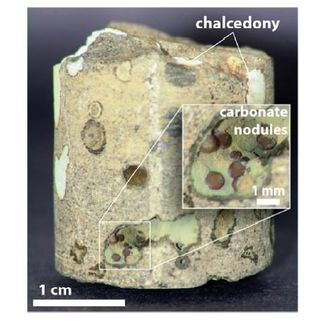Potential carbon capture role for new CO2-absorbing material
Advertisement
A novel porous material that has unique carbon dioxide retention properties has been developed through research led by the University of Nottingham. The findings, published in Nature Materials, form part of ongoing efforts to develop new materials for gas storage applications and could have an impact in the advancement of new carbon capture products for reducing emissions from fossil fuel processes.
It focuses on the metal organic framework NOTT-202a, which has a unique honeycomb-like structural arrangement and can be considered to represent an entirely new class of porous material.Most importantly, the material structure allows selective adsorption of carbon dioxide — while other gases such as nitrogen, methane and hydrogen can pass back through, the carbon dioxide remains trapped in the materials nanopores, even at low temperatures.
Lead researcher Professor Martin Schröder, in the University's School of Chemistry, said: "The unique defect structure that this new material shows can be correlated directly to its gas adsorption properties. Detailed analyses via structure determination and computational modelling have been critical in determining and rationalising the structure and function of this material."
The research team — which is included Dr Sihai Yang, Professor Alexander Blake, Professor Neil Champness and Dr Elena Bichoutskaia at Nottingham — collaborated on the project with colleagues at the University of Newcastle and Diamond Light Source and STFC Daresbury Laboratory.
NOTT-202a consists of a tetra-carboxylate ligands — a honeycomb like structure made of a series of molecules or ions bound to a central metal atom — and filled with indium metal centres. This forms a novel structure consisting of two interlocked frameworks.
State-of-the-art X-ray powder diffraction measurements at Diamond Light Source and advanced computer modelling were used to probe and gain insight into the unique carbon dioxide capturing properties of the material.
Most read news
Organizations
Other news from the department science

Get the chemical industry in your inbox
By submitting this form you agree that LUMITOS AG will send you the newsletter(s) selected above by email. Your data will not be passed on to third parties. Your data will be stored and processed in accordance with our data protection regulations. LUMITOS may contact you by email for the purpose of advertising or market and opinion surveys. You can revoke your consent at any time without giving reasons to LUMITOS AG, Ernst-Augustin-Str. 2, 12489 Berlin, Germany or by e-mail at revoke@lumitos.com with effect for the future. In addition, each email contains a link to unsubscribe from the corresponding newsletter.
































































